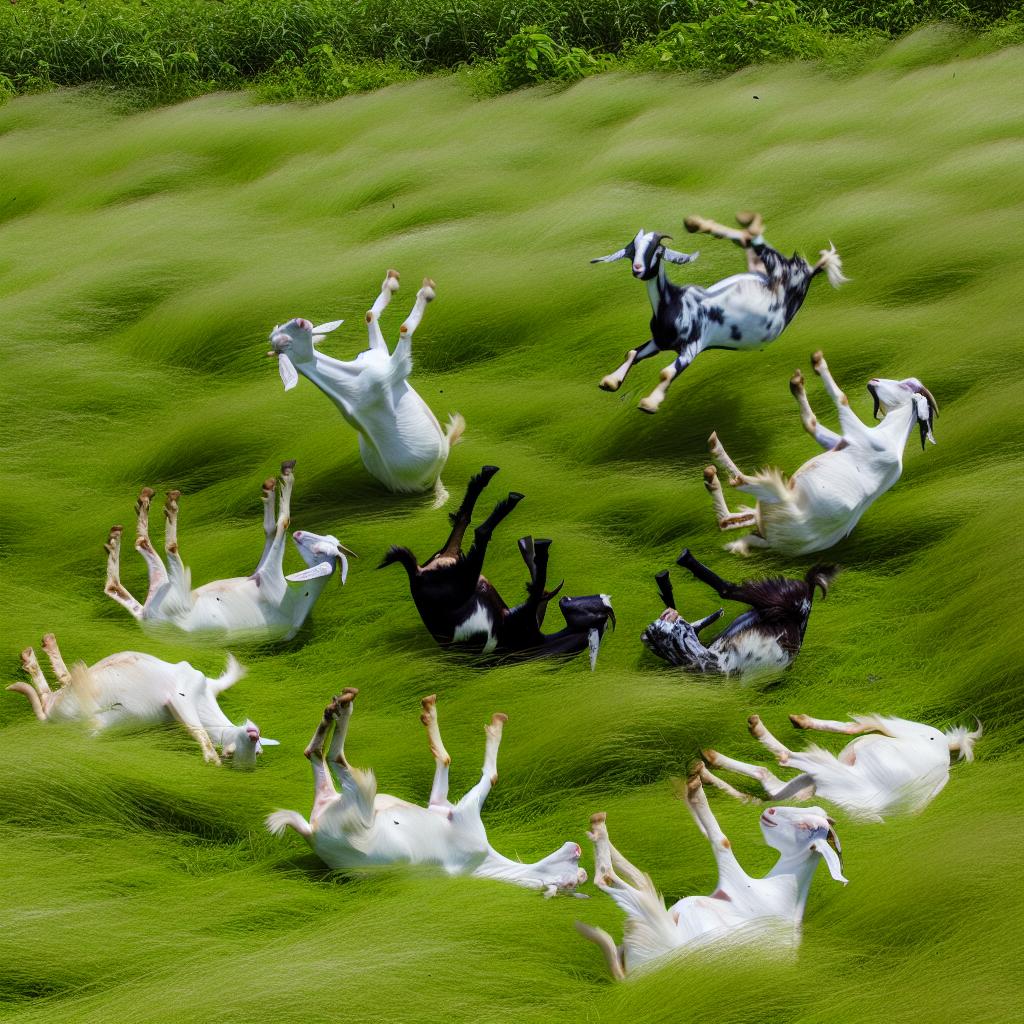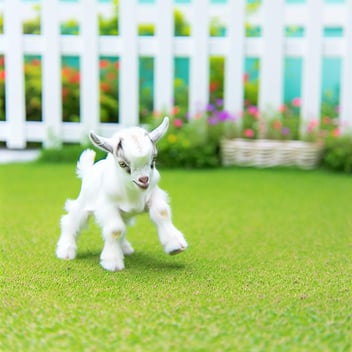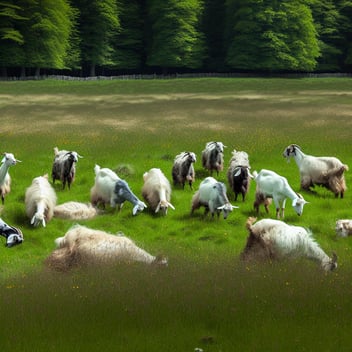Delve into the quirky and charming universe of fainting goats, a unique breed that captures hearts with their peculiar antics.
Unravelling the Mystery: What Makes Fainting Goats Faint
The phenomenon of fainting in goats, scientifically known as myotonia congenita, is a curious condition that sparks much interest. These goats possess an inherited genetic trait that causes their muscles to freeze when they're startled, leading to a temporary state of immobility. Contrary to the term 'fainting', the goats remain fully conscious during these episodes, which can last for a few seconds.
This peculiar reaction is due to a mutation in the chloride channel gene, which regulates muscle contractions. When startled, the muscles of a fainting goat contract but don't immediately relax, creating the characteristic 'fainting' pose. Over time, these goats learn to cope with their condition, often leaning against something to prevent falling over when an episode strikes.
History and Origins: Tracing the Roots of Fainting Goats
The lineage of fainting goats can be traced back to the 1880s in North America, where the first known population appeared in Tennessee. It's believed that a farm worker named John Tinsley, who came from Nova Scotia, brought four goats with the unique myotonic condition. The breed, also known as Tennessee Fainting Goats, quickly garnered attention due to their distinctive trait.
These goats were initially bred both for their meat and the novelty of their condition. Over time, fainting goats have become endeared to many as pets and curiosities on farms across the globe. Their lineage, despite being well-documented in North America, remains shrouded in mystery regarding its precise origins and genetic journey.
Caring for Your Fainting Goat: Essential Tips and Tricks
Caring for fainting goats isn't vastly different from caring for other goat breeds, but there are some considerations to ensure their well-being. Providing a safe, secure environment is paramount to prevent injuries from fainting episodes. This includes having a flat pasture area without sharp objects or steep inclines where they could fall and hurt themselves.
A balanced diet, regular veterinary check-ups, and routine deworming are key aspects of their care. Additionally, fainting goats require social interaction and mental stimulation, which can be facilitated through environmental enrichment and companionship with other goats or animals.
The Role of Fainting Goats in Modern Farms and Homesteads
Today, fainting goats serve various roles on farms and homesteads. Their gentle nature and manageable size make them superb for small-scale farming and as family pets. They're also utilised for land management purposes, such as natural brush clearing, due to their grazing habits.
Moreover, fainting goats are often kept as part of a sustainable farming practice, contributing to biodiversity on the farm. They can also be a source of income through breeding programs, and their unique trait brings a certain novelty to farm visits, which can be leveraged for agritourism ventures.
Debunking Myths: Understanding the Health and Happiness of Fainting Goats
Misconceptions about the health and happiness of fainting goats abound, but it's essential to understand that with proper care, they can lead full, contented lives. The fainting episodes themselves are not painful, and with time, goats learn to control their reactions to avoid falling over.
It's crucial to engage with reputable breeders and veterinarians to ensure the goats' health is monitored, including their unique genetic condition. Understanding and accommodating their needs allows these endearing animals to thrive in their environments and continue to charm those who encounter them.
Want to know more about Fainting Goats? Download our eBook now.





